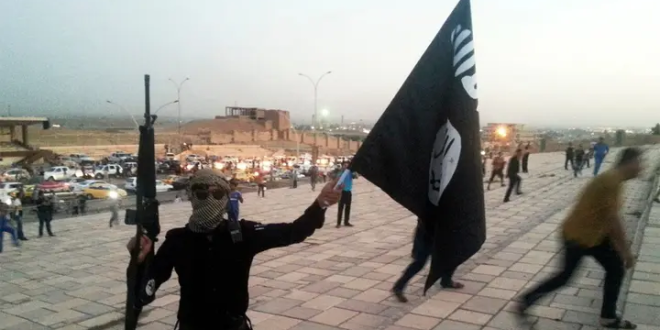KABUL – The Islamic State (ISIS) is exploiting expanding power vacuums in the Middle East and South Asia, renewing concerns about the terrorist group’s global reach. This resurgence has been highlighted by recent events, including a tragic New Year’s Day attack in New Orleans.
On January 1, Shamsud-Din Jabbar, a U.S.-born Army veteran from Texas, drove a pickup truck displaying an ISIS flag into a crowded Bourbon Street, killing 15 people and injuring dozens. While the FBI has yet to confirm Jabbar’s direct affiliation with ISIS, he reportedly pledged allegiance to the group in videos posted online. Despite these claims, investigators have not identified a definitive motive, and experts caution against labeling the incident as evidence of a broader ISIS resurgence.
Bill Roggio, senior fellow at the Foundation for Defense of Democracies, warns that declarations of ISIS’s defeat are premature. “These groups may experience setbacks, but they’re persistent,” Roggio stated.
ISIS continues to operate through networks across Afghanistan, Africa’s Sahel region, East Africa, and in its original strongholds of Iraq and Syria. Although the group’s operational capacity in Afghanistan has diminished following the Taliban’s rise to power, the U.S. withdrawal has left ISIS-K, the group’s regional affiliate, facing reduced opposition.
“The Taliban and ISIS are enemies,” Roggio explained. “While the Taliban still targets ISIS, the absence of U.S. forces means ISIS faces less pressure overall, granting them greater freedom of movement.”
Power Vacuums and Global Risks
The geopolitical landscape has shifted dramatically in recent years. The 2021 U.S. withdrawal from Afghanistan, coupled with the recent fall of the Assad regime in Syria, has created significant security vacuums. In Syria, the collapse of Bashar al-Assad’s government under pressure from Hay’at Tahrir al-Sham, an al Qaeda derivative, has removed a key opponent of ISIS, allowing the group to strengthen its foothold.
Security experts fear these developments mirror the conditions that enabled ISIS’s initial rise following the U.S. withdrawal from Iraq. ISIS-K’s deadly 2021 suicide bombing during the U.S. evacuation of Kabul underscored the ongoing threat, claiming the lives of 13 U.S. service members and over 170 Afghan civilians.
Future Concerns in Iraq and Syria
The Biden administration’s plan to end the U.S. military mission in Iraq by 2026 has drawn criticism from security analysts. They argue that ISIS remains a potent threat capable of exploiting reduced U.S. presence. The potential withdrawal of American troops from Iraq and Syria could further embolden the terrorist network, particularly in regions where it has already established significant presence.
Roggio emphasized that the Assad regime’s removal in Syria has provided ISIS with critical opportunities to regroup. “One of the Islamic State’s enemies has been taken off the board, giving ISIS more space to regenerate strength,” he explained.
 Afghanistan Times Latest News and Analysis from Afghanistan and the Region
Afghanistan Times Latest News and Analysis from Afghanistan and the Region




